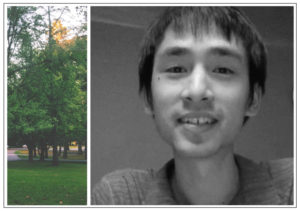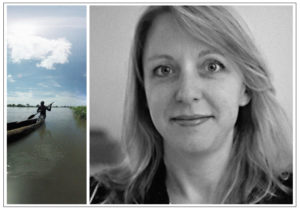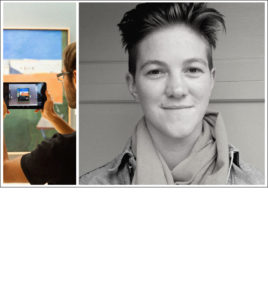Meet previous Magic Grantees!
Are you passionate about the role that emerging technologies can play in the future of journalism? Do you have a story that can only be told using technology outside the scope of traditional media? A Brown Institute Magic Grant might be for you! Each year, the Brown Institute awards close to $1M in funding to foster new tools and modes of expression, and to create stories that escape the bounds of page and screen. We are committed to radical experimentation with the potential to define new priorities and practices for both engineering and journalism.
The deadline to apply for a 2018-2019 Magic Grant is April 9, and the process is relatively easy. Below are a few people who have been awarded Magic Grants. Their projects will give you a sense of the kind of work we do. Check back as we will add stories here every day or so.
 Meet Grga Basic and Francesca Berardi. They received a Magic Grant in 2016 to tell the story of a Brooklyn-based community of “canners,” people who make a living collecting cans and bottles on the streets. Grga and Francesca’s work is a graceful balance of quantitative and qualitative information display — they are exploring new forms of data portraiture and merging illustration with hard-edged mapping. Francesca is a graduate of Columbia’s MA program and Grga is a Research Scholar at the Center for Spatial Research at Columbia’s GSAPP.
Meet Grga Basic and Francesca Berardi. They received a Magic Grant in 2016 to tell the story of a Brooklyn-based community of “canners,” people who make a living collecting cans and bottles on the streets. Grga and Francesca’s work is a graceful balance of quantitative and qualitative information display — they are exploring new forms of data portraiture and merging illustration with hard-edged mapping. Francesca is a graduate of Columbia’s MA program and Grga is a Research Scholar at the Center for Spatial Research at Columbia’s GSAPP.
 This is David Lee. With a 2013 Magic Grant, he and Pranav Dandekar, both PhD students in Engineering at Stanford, looked at new forms of crowd-based decision making, what they termed “deliberative and participatory democracy.” Cities from Vallejo to Chicago used their “participatory budgeting” platform to let the public set funding priorities. David is now an Assistant Professor at the the University of California at Santa Cruz.
This is David Lee. With a 2013 Magic Grant, he and Pranav Dandekar, both PhD students in Engineering at Stanford, looked at new forms of crowd-based decision making, what they termed “deliberative and participatory democracy.” Cities from Vallejo to Chicago used their “participatory budgeting” platform to let the public set funding priorities. David is now an Assistant Professor at the the University of California at Santa Cruz.
 Meet Cécile Schilis-Gallego, Caelainn Barr and Daniel Drepper, the team behind Earnings Inspector — a 2014 Magic Grant that helped business journalists make use of forensic accounting tools to spot fraud. Since completing their grant, Cécile has joined the International Consortium of Investigative Journalists, Caelainn is now Data Projects Editor at the Guardian, and Daniel is Editor in Chief at BuzzFeed Germany.
Meet Cécile Schilis-Gallego, Caelainn Barr and Daniel Drepper, the team behind Earnings Inspector — a 2014 Magic Grant that helped business journalists make use of forensic accounting tools to spot fraud. Since completing their grant, Cécile has joined the International Consortium of Investigative Journalists, Caelainn is now Data Projects Editor at the Guardian, and Daniel is Editor in Chief at BuzzFeed Germany.
 This is Rachel Rosenfelt. Together with Sam Lavigne and Francis Tseng, she was awarded a 2017 Magic Grant to develop the idea of “Rhetorical Software” – political arguments expressed through software rather than prose. Their idea was to deploy software as a form of critique, imagining new technological possibilities for our world. On 2/28, Rachel was named Publisher of the NewRepublic.
This is Rachel Rosenfelt. Together with Sam Lavigne and Francis Tseng, she was awarded a 2017 Magic Grant to develop the idea of “Rhetorical Software” – political arguments expressed through software rather than prose. Their idea was to deploy software as a form of critique, imagining new technological possibilities for our world. On 2/28, Rachel was named Publisher of the NewRepublic.

Meet Will Crichton, a Computer Science PhD student at Stanford. Will’s 2017 Magic Grant, Esper, helps identify patterns in the vast number of videos stored on sites like YouTube. By organizing large video collections, Esper lets us “scale up” reporting to tackle complex visual data. Will has recently partnered with the Internet Archive’s TV News project and is pouring over terabytes of broadcast news, looking for patterns in coverage.

Meet Marcelle Hopkins. She and a a team of two other Columbia Journalism alumni, Evan Wexler and Benedict Moran, were awarded a Magic Grant in 2015 for a 360 video on the famine in South Sudan. It was produced with PBS FRONTLINE and received nearly 2.5M views. Here is their video. Marcelle is now Executive Producer of VR at the New York Times.
 This is Raz Schwartz. He received a Magic Grant in 2013 for “City Beat,” a live, cultural map of a city formed by scanning social media for neighborhood hotspots. CityBeat was ahead of its time, relying on automated (yet transparent) tools for determining “what’s hot.” Raz went from CityBeat to researching location-based products at Facebook and is now the Research Lead at Oculus.
This is Raz Schwartz. He received a Magic Grant in 2013 for “City Beat,” a live, cultural map of a city formed by scanning social media for neighborhood hotspots. CityBeat was ahead of its time, relying on automated (yet transparent) tools for determining “what’s hot.” Raz went from CityBeat to researching location-based products at Facebook and is now the Research Lead at Oculus.
 This is Colleen Stockmann. In 2015, she and Maricarmen Barrios from Stanford’s Cantor Arts Center and Jean-Beaptiste Boin from Stanford’s Department of Electrical Engineering, received a 2015 Magic Grant for Art++, an augmented reality experience overlaying stories (text and visuals) on museum objects through the viewfinder of a smartphone. The app is a new way to experience artworks, using the objects themselves to reference the museum’s vast information on objects in their collection. Colleen went from the Cantor and Art++ to a PhD program in Art History at UMN.
This is Colleen Stockmann. In 2015, she and Maricarmen Barrios from Stanford’s Cantor Arts Center and Jean-Beaptiste Boin from Stanford’s Department of Electrical Engineering, received a 2015 Magic Grant for Art++, an augmented reality experience overlaying stories (text and visuals) on museum objects through the viewfinder of a smartphone. The app is a new way to experience artworks, using the objects themselves to reference the museum’s vast information on objects in their collection. Colleen went from the Cantor and Art++ to a PhD program in Art History at UMN.

